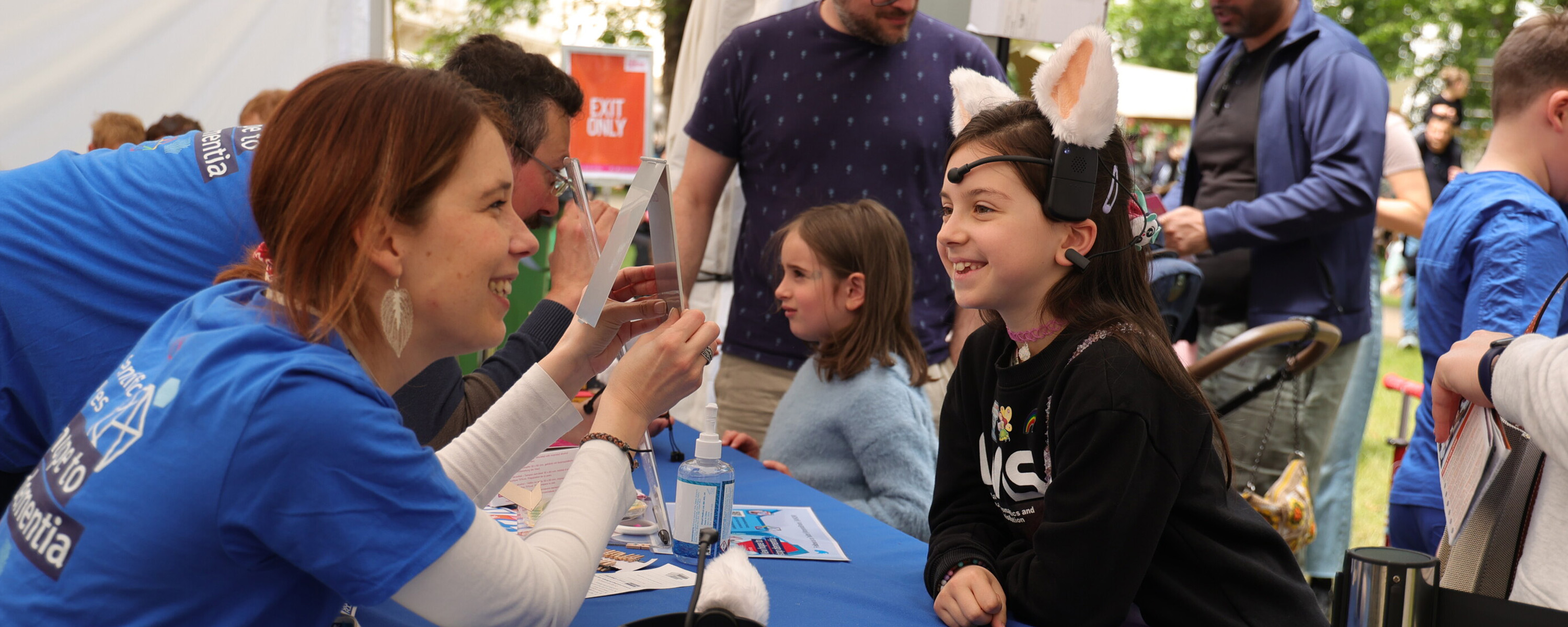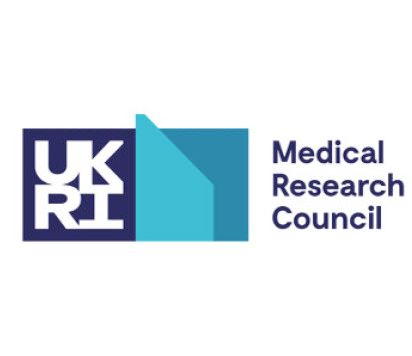
UK DRI staff and students from our Centre inspire the public at Great Exhibition Road Festival 2024!
Across 14-15 June 2024, the Great Exhibition Road Festival welcomed a record number of visitors to celebrate science and the arts. The UK DRI at Imperial proudly hosted three engaging stalls, each presenting different areas of our cutting-edge research in fun, creative, and accessible ways.
Visitors enjoyed a variety of interactive activities, from using cat ear headsets to explore the importance of sleep, to creating artwork by blow painting glial cells. Our goal was to make science approachable and enjoyable for everyone, sparking curiosity and promoting a deeper understanding of our work.
The science behind our stalls
Stall led by Dr Sara Wong (Wisden lab)
Good sleep is vital for a healthy body and mind. Sleep disturbances often precede and, in some instances, pose as a risk factor for many disorders, including Alzheimer’s disease. The Wisden lab hosted a stall aimed at highlighting the importance of sleep and promoting healthy sleep habits through interactive and educational activities.
One of the key attractions was a demonstration using motorised cat ears equipped with an EEG sensor, which introduced visitors to the concept of electroencephalograms (EEG). This activity helped explain how the brain's electrical activity changes across different sleep and wake stages.
Visitors enjoyed an arts and crafts session where they could design their ideal dream bedroom, incorporating elements of good sleep hygiene. To further engage both children and adults, we set up a sticker board asking visitors to share how many hours of sleep they typically get. This sparked conversations about the optimal amount of sleep and the vital role that different stages of sleep play in maintaining a healthy brain and body.
Stall led by Dr Danielle Kurtin (Grossman lab)
Temporal Interference (TI) stimulation has been developed as a novel therapeutic technique to modulate the activity of deep brain structures. The technology changes brain function through noninvasively generating small amounts of electricity in the brain.
At this stall, visitors could interact with simulations of how the intersection of two electric currents generates the electric field that changes neural activity. To illustrate the potential of TI stimulation as a therapeutic intervention for neurological or psychiatric conditions, the group provided 3D brain models that participants could disassemble, revealing the specific brain regions the Interventional Systems Neuroscience lab is targeting for TI stimulation.
Attendees were encouraged to visit the large mural on Exhibition Road being painted over the weekend by the artist Zabou. The mural featured a person with substance (mis)use who is helping co-produce research exploring the development of TI for substance (mis)use/dependence. The large, interactive stall showcased the Grossman lab's work in developing technology to help people with neurological and psychiatric conditions, and improve the quality of life for the patients, their families, and their wider communities.
Visit the Interventional Systems Neuroscience page.
Stall led by Dr Sabina Cerullo and Dr Carola Radulescu (Barnes lab)
These activities gave visitors a deeper understanding of neuroscience concepts, emphasizing the critical role of synaptic activity and connectivity in healthy development, aging, and Alzheimer's Disease.
Participants explored the fascinating world of brain connectivity by creating their own brain models using cardboard, magnets, and other fun materials. This hands-on activity provided insights into the brain's structure and how its different parts work together. Next, they delved into the brain’s complexities with large neuron and synapse jigsaw puzzles. These puzzles taught about synaptic connections and their crucial role in cognitive functions, with an emphasis on understanding Alzheimer's Disease. Visitors tested their memory with a brain-themed card game. As they matched images of neurons, neurotransmitters, and brain activities, they learned how a healthy brain supports memory and learning, while also discovering the importance of synaptic activity in maintaining brain health.
Read more about the Barnes lab's work investigating neural-circuit plasticity in neurodegeneration.

 The group also collaborated with local artist Matt Dosa, who created an artwork that visually interprets the significance of sleep. The top row of the piece illustrates a healthy night’s rest, with smooth transitions between the stages of sleep, while the bottom row depicts a disrupted night’s sleep, where the cycles are irregular and fragmented.
The group also collaborated with local artist Matt Dosa, who created an artwork that visually interprets the significance of sleep. The top row of the piece illustrates a healthy night’s rest, with smooth transitions between the stages of sleep, while the bottom row depicts a disrupted night’s sleep, where the cycles are irregular and fragmented.